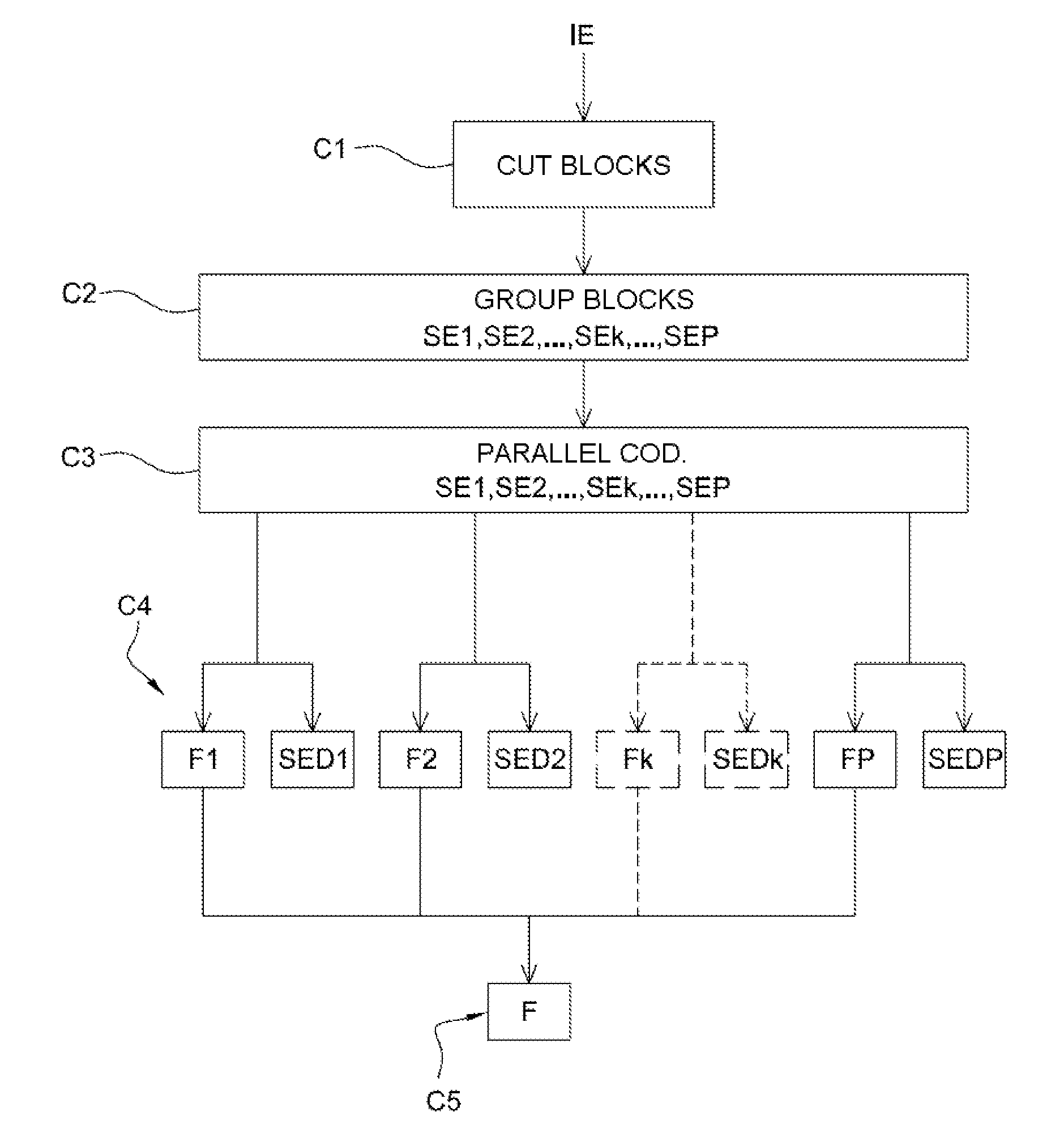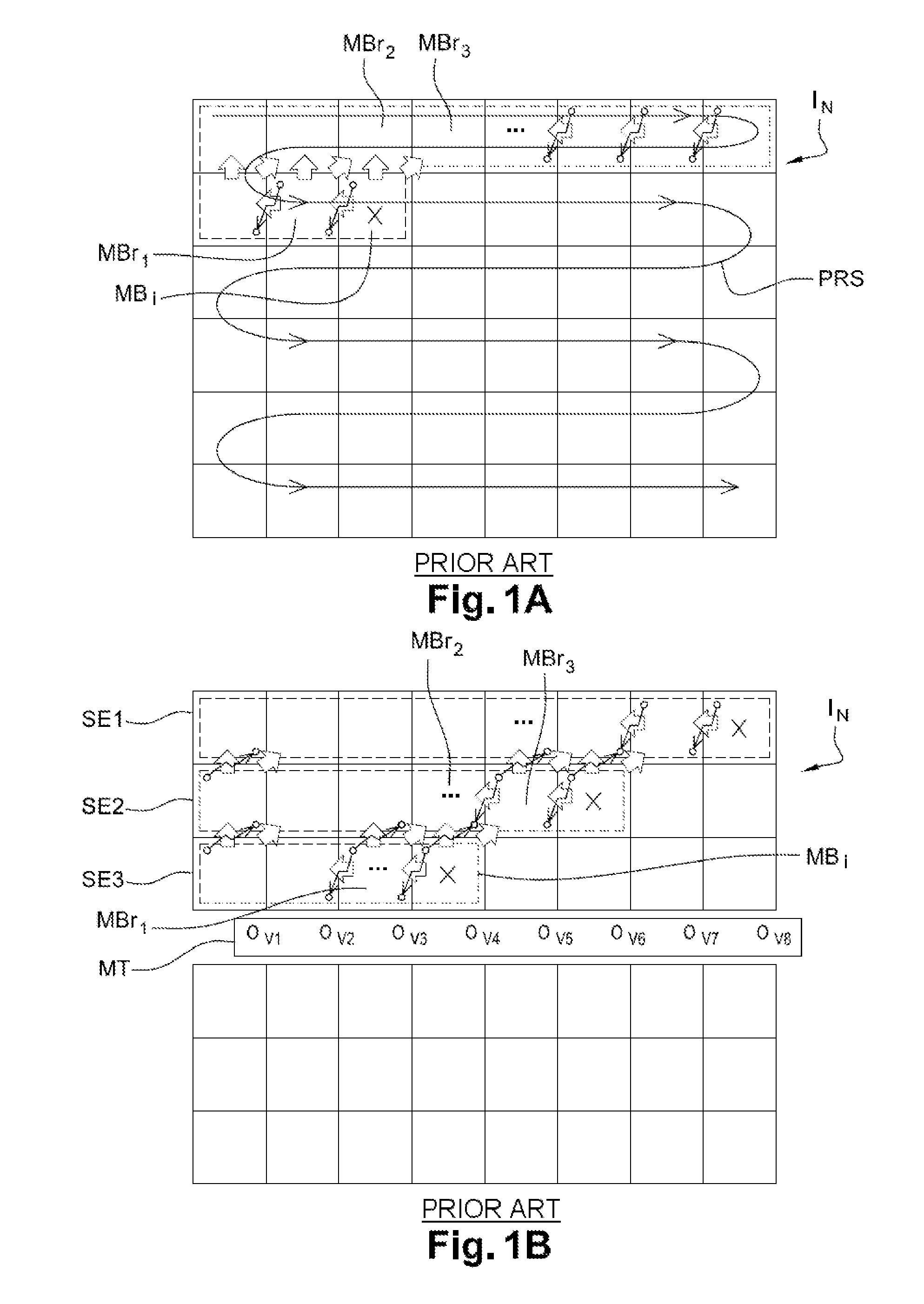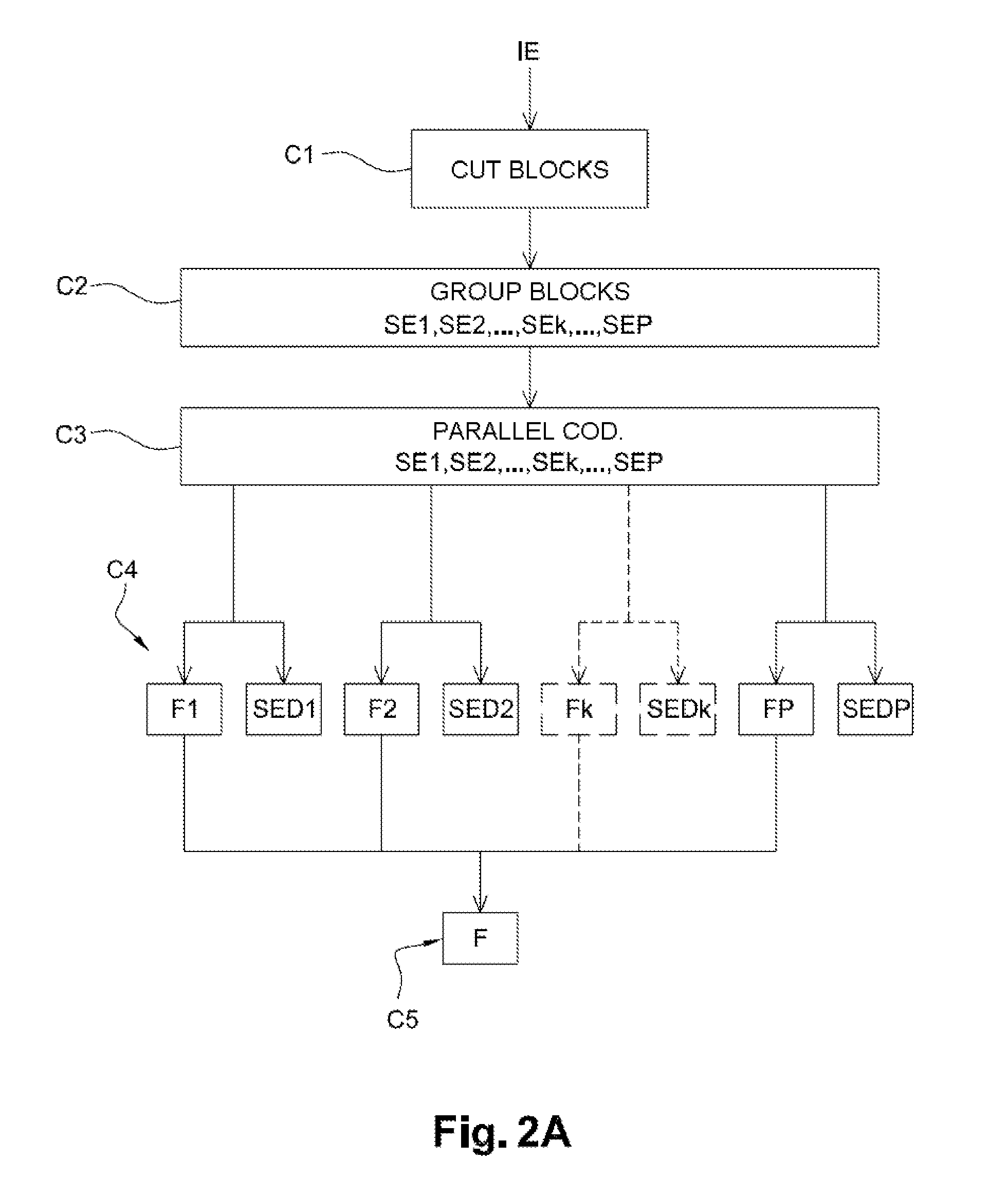Method of coding and decoding images, coding and decoding device and computer programs corresponding thereto
a technology of image and probability, applied in the field of image processing, can solve the problems of loss of effectiveness during coding, high storage cost of memory resources, etc., and achieve the effect of better video compression performance and better learning of probability of symbols
- Summary
- Abstract
- Description
- Claims
- Application Information
AI Technical Summary
Benefits of technology
Problems solved by technology
Method used
Image
Examples
Embodiment Construction
[0085]An embodiment of the invention will now be described, in which the coding method according to the invention is used to code a sequence of images according to a binary stream close to that obtained by a coding according to the H.264 / MPEG-4 AVC standard. In this embodiment, the coding method according to the invention is for example implemented in a software or hardware manner by modifications of a coder initially in accordance with the H.264 / MPEG-4 AVC standard. The coding method according to the invention is represented in the form of an algorithm comprising steps C1 to C5, represented in FIG. 2A.
[0086]According to the embodiment of the invention, the coding method according to the invention is implemented in a coding device CO represented in FIG. 3A.
[0087]With reference to FIG. 2A, the first coding step C1 is the cutting of an image IE of a sequence of images to be coded into a plurality of blocks or macro-blocks MB, as represented in FIG. 4A or 4B. In the examples represente...
PUM
 Login to View More
Login to View More Abstract
Description
Claims
Application Information
 Login to View More
Login to View More - R&D
- Intellectual Property
- Life Sciences
- Materials
- Tech Scout
- Unparalleled Data Quality
- Higher Quality Content
- 60% Fewer Hallucinations
Browse by: Latest US Patents, China's latest patents, Technical Efficacy Thesaurus, Application Domain, Technology Topic, Popular Technical Reports.
© 2025 PatSnap. All rights reserved.Legal|Privacy policy|Modern Slavery Act Transparency Statement|Sitemap|About US| Contact US: help@patsnap.com



